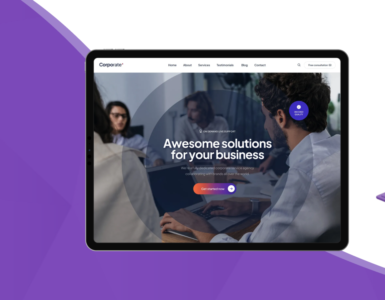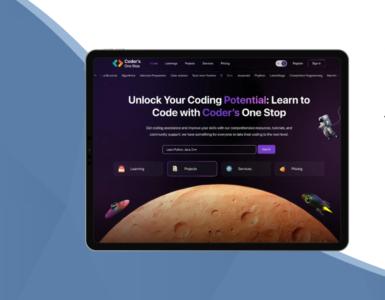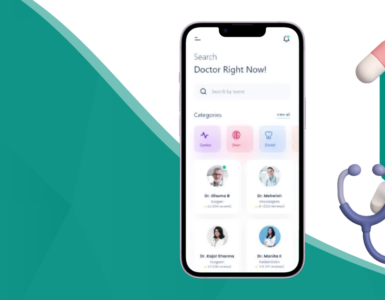Nowadays, music streaming app development is on the rise. The advent of smartphones and mobile technology has revolutionized how people listen to music. It has made music from all genres and regions accessible to users worldwide with just a few taps.
Moreover, this shift has significantly influenced listening habits, replacing traditional downloads and physical media with streaming services. Today, most music lovers prefer streaming live or on-demand music via mobile apps for a small subscription fee. These services are now accessible across platforms like Android, iOS, and the web—making them a staple for music fans globally.
In this blog, we’ll explore the key features, technologies, and costs involved in developing a music streaming app, along with examples and practical insights.
How is Music Streaming App Development Categorized?

Music streaming apps generally fall into two main categories:
1. On-Demand Streaming Apps
These apps allow users to select and stream tracks of their choice. They often partner with major record labels, ensuring music rights and royalty distributions are handled properly.
Popular examples:
-
Apple Music
-
SoundCloud
Such apps offer personalization features, including curated playlists, favorites, offline listening, and more—enhancing user experience.
2. Radio Station Apps
These emulate the traditional radio experience by streaming trending or genre-based music non-interactively. Users don’t have control over the playlist, though they can usually skip tracks.
Popular examples:
-
iHeartRadio
Licensing costs are usually lower for radio-style apps since content control is limited.
The Technology Stack Behind Music Streaming Apps
To build a functional and scalable music streaming app, the right technology stack is crucial. A great idea without robust tech won’t go far.
Here’s a simplified look at what powers these apps:
-
Data Storage & Caching:
Most apps store audio files on cloud servers, allowing users to stream without downloading. Frequently accessed content is cached to reduce load times.
Tools used: PostgreSQL, Cassandra, Redis -
Backend Development:
Popular backend languages: Java, PHP, Python
Frameworks: Node.js, Django, Spring Boot -
Frontend & UI/UX:
For cross-platform development, use React Native or Flutter. Native options like Swift (iOS) and Kotlin (Android) are great for platform-specific performance. -
Audio Streaming Protocols:
Streaming is powered by RTMP, HLS, or DASH protocols to ensure real-time delivery and buffering.
For a step-by-step breakdown of mobile app development, check out our Mobile App Development Services
Must-Have Features for Your Music Streaming App
To compete with top players like Spotify or YouTube Music, your app must deliver an exceptional user experience. Here are the key features your music app must include:
1. Admin Panel
The admin panel is your app’s control center. It lets you:
-
Manage user subscriptions and plans
-
Create and update curated playlists
-
Monitor user behavior and analytics
Estimated development time: ~400 hours
2. Social Sharing
Music is social. Allow users to share:
-
Playlists
-
Currently playing tracks
-
Achievements (e.g., top artist of the month)
Integrate platforms like Facebook, Instagram, or WhatsApp to increase user engagement and organic growth.
3. Customized Notifications
Keep your users hooked with personalized alerts:
-
New releases from favorite artists
-
Playlist updates
-
Suggested music based on user behavior
Personalization boosts retention by making users feel seen and valued.
4. UX and UI Design
A clean, intuitive, and attractive UI/UX is the foundation of user satisfaction. Features to prioritize:
-
Smooth navigation
-
Eye-catching player UI
-
Night mode or customizable themes
Estimated development time: ~160 hours
For guidance on designing successful apps, check out our blog: How to Create a Music Streaming App Like Spotify?
Cost Breakdown of Developing a Music Streaming App

everal factors influence the overall cost of building a music streaming app, including:
1. Technology Stack
Using high-performance tools and frameworks comes at a price. Servers, APIs, streaming protocols, and CDNs (Content Delivery Networks) must all be considered. While some open-source tools reduce costs, enterprise solutions offer better reliability and scalability.
2. Development Team
You’ll need:
-
UI/UX Designers
-
Frontend & Backend Developers
-
QA Engineers
-
Project Managers
You can either hire freelancers, set up an in-house team, or partner with an experienced mobile app development company like Siddhi Infosoft.
📌 Pro Tip: Outsourcing can reduce costs by up to 50%, especially if you work with skilled teams in countries like India or Ukraine.
3. Licensing & Music Rights
To legally stream music, you’ll need licensing agreements from publishers or aggregators like:
This can significantly impact costs depending on the catalog and audience size.
4. Marketing & Promotions
Once your app is ready, you’ll need a marketing strategy to:
-
Announce your app launch
-
Attract early users
-
Create buzz via social media, influencer partnerships, or app store ads
Expect to dedicate 15-25% of your total budget to marketing in the first few months.
Final Thoughts
The music streaming industry is expected to grow exponentially, with revenues projected to exceed $50 billion by 2030 (Statista).
Developing your own music streaming app can be both profitable and impactful, provided you understand the core:
-
Choose the right type of streaming service (on-demand vs. radio)
-
Use a solid tech stack
-
Integrate must-have features
-
Plan for licensing, development, and marketing costs
Ready to transform your music app idea into reality? Get in touch with our team at Siddhi Infosoft—we’ll guide you from concept to launch.
























